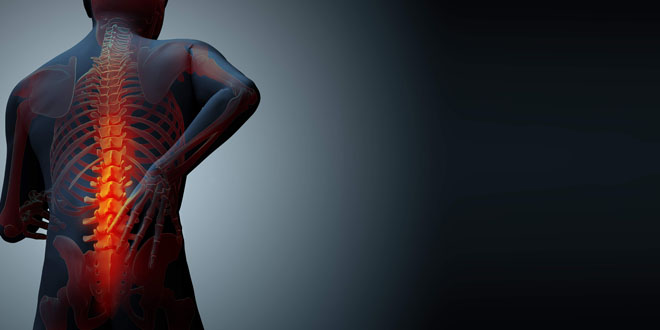
Breaking bones: Pakistanis prone to osteoporosis
As per a recent study in 2009, six to seven per cent post-menopausal women in Karachi and 18.6% in Lahore are suffering from osteoporosis. This data was collected from women of different social economic strata.
Osteoporosis is often considered an inevitable disease in post-menopausal women, due to which the disease doesn’t attract as much attention as other illnesses do. It is widely spread and a large number of women are affected by it to a certain extent. However, nowadays, this disease is also seen in men at an alarmingly high level due to decreased levels of androgen.
Osteoporosis is a condition in which the bones become weak and fragile. They are easily broken and are not able to function properly. The bone basically becomes thin, and has pores in it. The bones in human body are constantly being renewed. Old cells are resorbed and new bone is formed. Osteoporosis is when the rate of ‘bone formation’ and ‘bone resorption’ is not in equilibrium. This means that either there is not enough bone formation, or too much resorption, or both.
By the time most people are 20-years-old, they have reached their maximum bone mass. Your future condition of bones highly depends on how much calcium and phosphate your body absorbs and saves. Up until a person is 40, the body absorbs and stores calcium. If your calcium levels are healthy, the risk of suffering from osteoporosis is lowered. A lower level of estrogen is one of the major causes of low calcium levels. Hence, post-menopausal women suffer the most from osteoporosis. Besides that, men who have low androgen are also a victim of osteoporosis. Low vitamin D levels are also commonly seen in women, especially those who stay indoors and are not getting enough sun light.
Women are also choosy in what they eat. Many women don’t like the smell of milk, or the odor in fish or the tasteless kale. These habits tend to keep women from consuming a healthy diet and hence suffer from osteoporosis and other systemic diseases as well.
Other conditions that may lead to osteoporosis include overuse of corticosteroids (Cushing syndrome), thyroid problems, lack of muscle use, bone cancer, smoking, certain genetic disorders, use of certain medications and problems such as low calcium in diet.
Symptoms include sharp pain in any part of the body, easily fractured bones, pain in neck, simple stimuli causing excruciating pain. A lot of physical activity at one moment may cause the patient to feel weak for a long time as the bones are unable to take on so much pressure.
PREVENTING OSTEOPOROSIS
Many governments all over the world are working on awareness campaigns in order to eliminate osteoporosis from their nations. Here are a few ways in which this disease can be avoided.
CALCIUM LEVELS
Adults from 18 to 50-year-olds should keep a check on their calcium levels, get regular screening and at the same time maintain a healthy lifestyle. Avoid smoking, soft drinks and alcohol, things that lower your calcium levels. Instead, you should increase the uptake of milk, yogurt, green vegetables, sea food, fruits and exercise regularly. It is best to take calcium in natural form as supplements can often result in kidney stones. Soy products such as tofu are also a good source of calcium.
VITAMIN D
Vitamin D improves your body’s ability to absorb calcium. Many people get adequate amounts of vitamin D from sunlight but this may not be a good source if you live in high altitudes, if you’re housebound, or if you regularly use sunscreen or avoid the sun entirely because of the risk of skin cancer. Fish is also a good source of vitamin D.
EXERCISE
Exercise lowers the rate of bone loss. No matter what your age is, or what the position of your health is, if you start today, you’re doing yourself a favor.
“Combine strength training exercises with weight-bearing exercises. Strength training helps strengthen muscles and bones in your arms and upper spine, and weight-bearing exercises — such as walking, jogging, running, stair climbing, skipping rope, skiing and impact-producing sports — affect mainly the bones in your legs, hips and lower spine,” experts believe.
Bones are what your body is standing on. Make sure you take care of them before it is too late. Be aware of osteoporosis and help people around you cope with it effectively.

